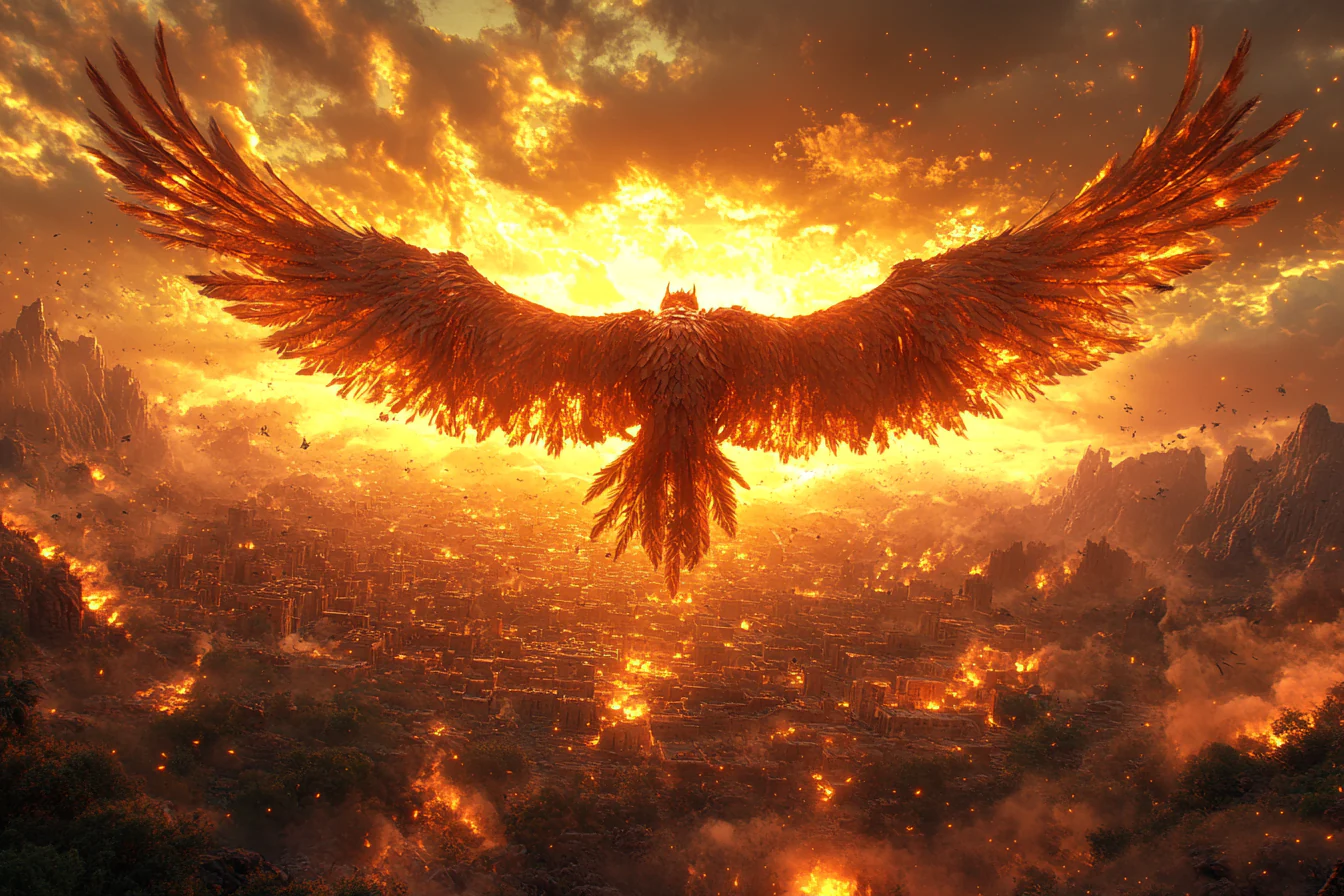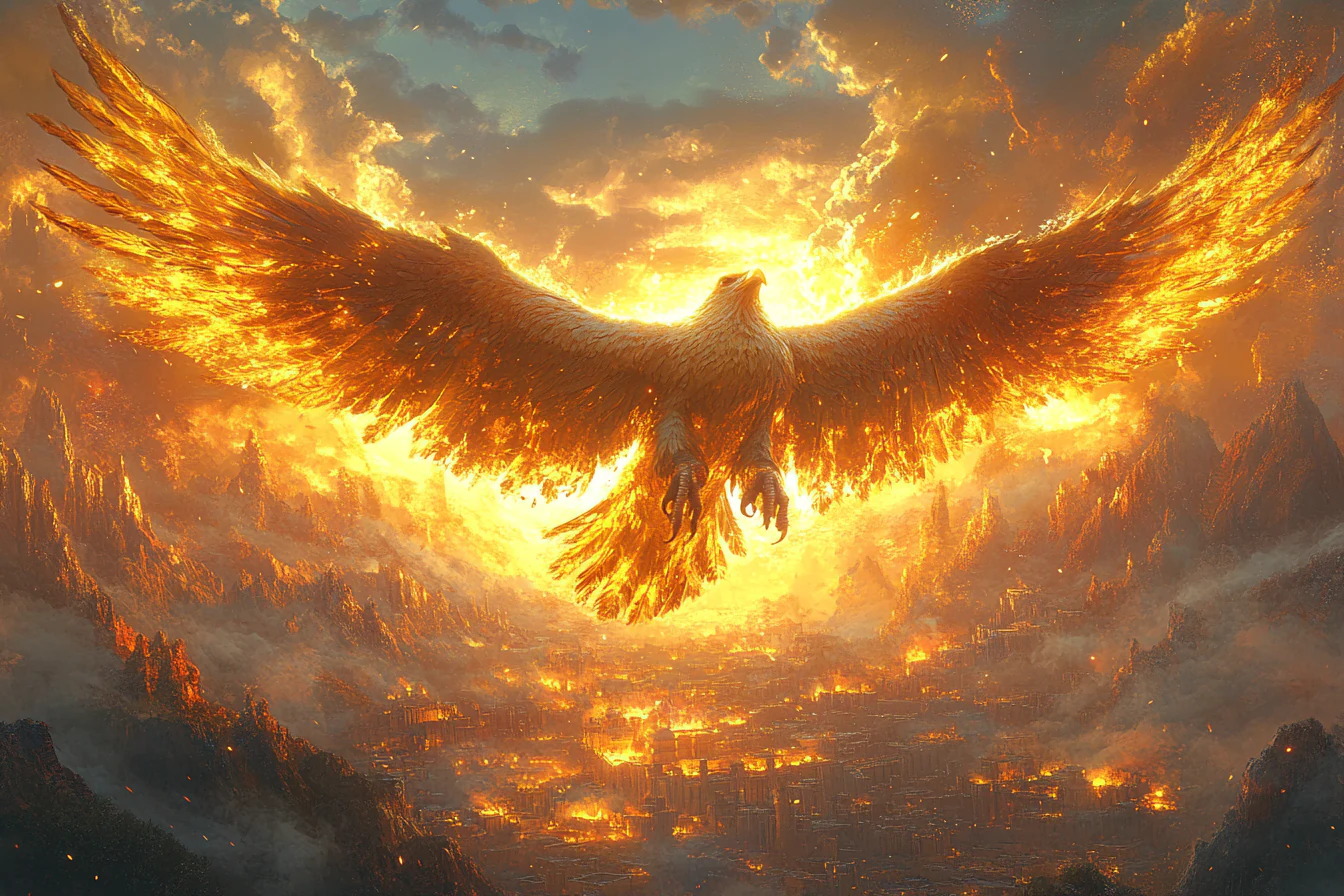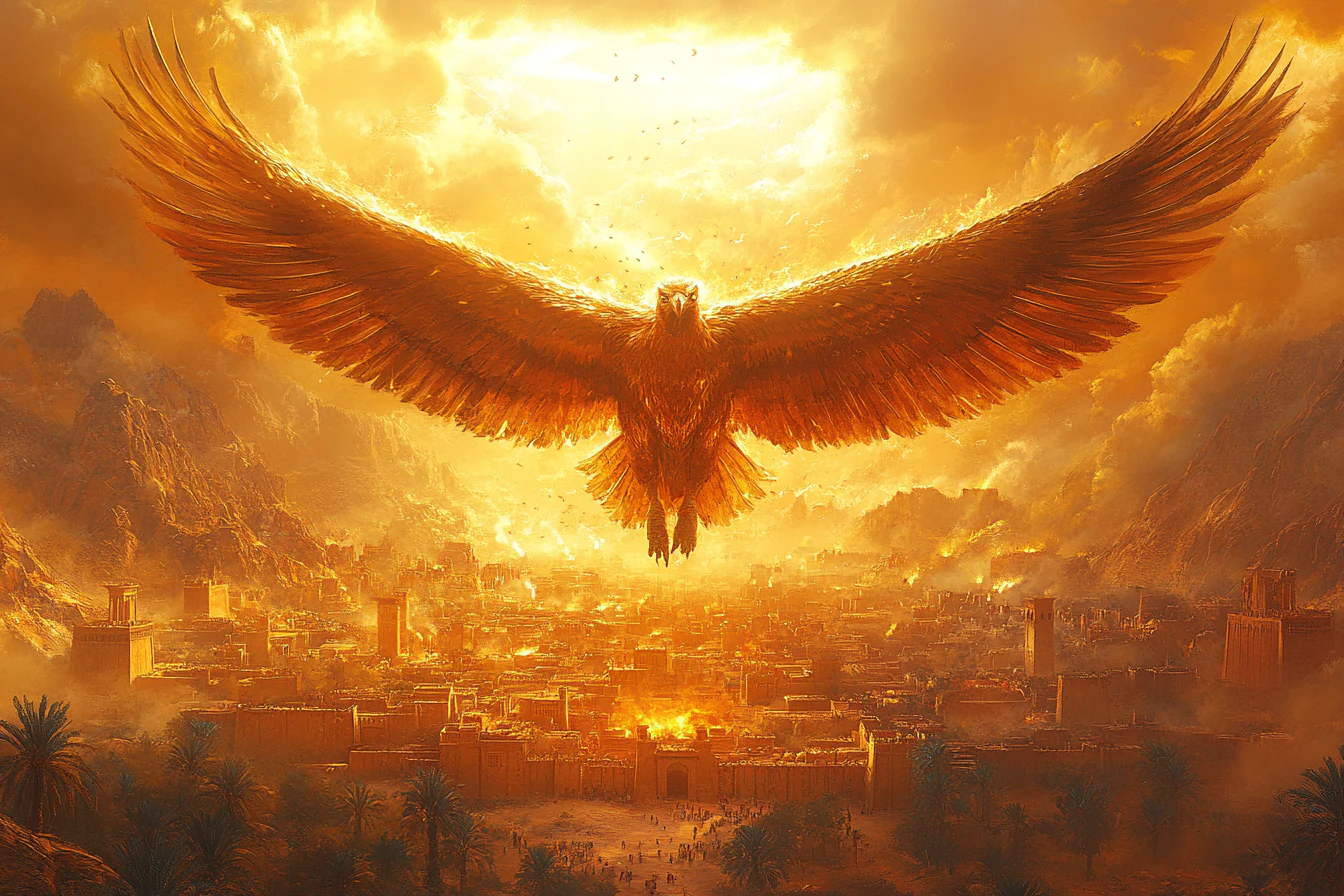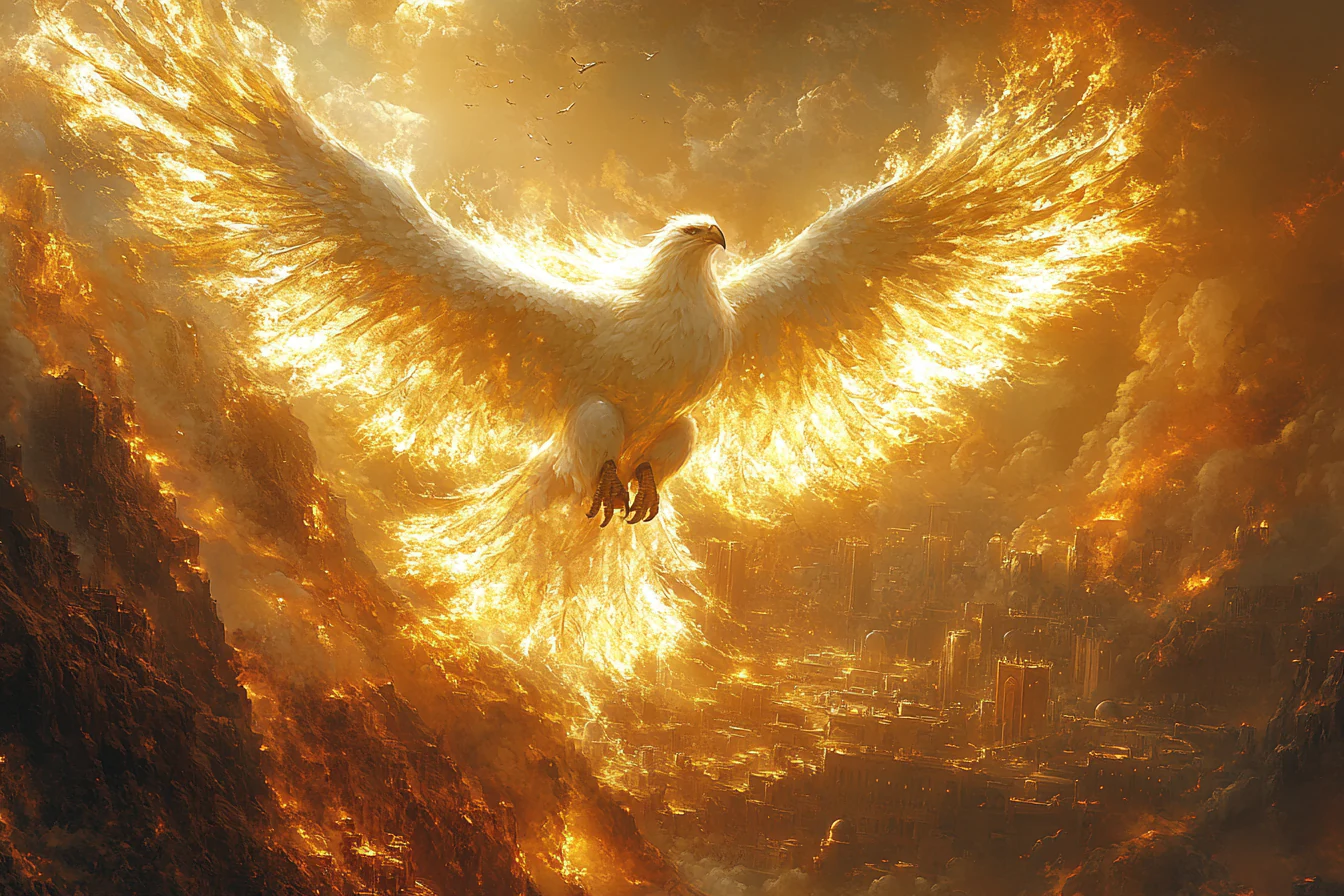What Is the Roc?
The Roc is a legendary giant bird that appears in Arabic, Persian, and some Asian mythologies. In Arabic, it is known as “Rukh” (الرُّخّ), a colossal bird so enormous that it could carry off elephants in its talons. The Roc is especially prominent in Islamic folklore, most notably in One Thousand and One Nights, through the adventures of the sailor Sinbad.
The Roc symbolizes the overwhelming and uncontrollable power of nature—something beyond human comprehension or control. While it shares similarities with other giant birds from Western mythologies, like the Phoenix or Thunderbird, the Roc stands out with its immense size and untamed, ferocious nature.
Appearance and Characteristics of the Roc

The Roc is typically described as a gigantic eagle-like bird, with wings so vast they can darken the sky. It is powerful enough to lift an elephant or even a small ship. Its defining features include:
- Enormous size: One of its most notable traits. Some legends say its wingspan stretched dozens of meters.
- Steel-like talons: Razor-sharp claws capable of piercing through solid rock.
- Iron-hard feathers: In some stories, its feathers are said to be as tough as metal, nearly impossible to penetrate.
- Thunderous cry: The Roc’s scream can shake the heavens and send enemies fleeing in fear.
The Roc often serves as a hyperbolic representation of nature’s power—a symbol of grandeur far beyond the limits of human imagination.
Origins and Symbolic Meaning of the Roc

The Roc originates from Arabic mythology and Indian Ocean folklore. Some scholars believe the creature was inspired by the now-extinct elephant bird (Aepyornis) of Madagascar—the largest bird known to have existed, growing up to 3 meters tall and weighing over 400 kg.
In One Thousand and One Nights, the Roc appears during Sinbad’s adventures, where he witnesses the giant bird carrying away elephants like prey. The Roc later became a familiar figure in Eastern cultures and eventually entered European medieval literature as part of exotic Eastern legends.
Symbolic Meanings of the Roc:
- Uncontrollable natural power: The Roc embodies the untamed might of nature, sometimes seen as divine wrath.
- Extraordinary challenges: Represents obstacles far beyond normal human capability—conquered only through wit and courage.
- Exploration of the unknown: A symbol of awe-inspiring wonders beyond human understanding—reflecting the journey of discovery and self-realization.
Physical Traits and Powers of the Roc

Although the Roc doesn’t possess magical powers like some other mythical creatures, its physical strength alone makes it fearsome—even to the gods:
- Colossal strength: Can lift and fly away with elephants, tigers, or even entire ships.
- Sky-darkening wingspan: When it soars above, the sun is eclipsed, resembling a solar blackout.
- Incredible vision: It can spot prey from vast distances—symbolizing vigilance and omnipresence.
- Aerial dominance: With its power to dive and strike from great heights, the Roc is an unstoppable predator when enraged.
No weapon is said to be effective against the Roc. Survival in the face of this beast often depends on cleverness or avoiding it altogether.
Famous Stories and Legends About the Roc

The Roc is best known through the legendary voyages of Sinbad the Sailor:
- In one tale, Sinbad finds a giant egg on a deserted island—it belongs to the Roc.
- When the Roc returns and discovers Sinbad near its egg, it attacks. Sinbad clings to the bird’s leg and is carried across strange and distant lands.
- In another episode, the Roc drops massive boulders to destroy Sinbad’s ship and crew in retaliation for disturbing its nest.
The Roc also appears in Marvels of the East, an Anglo-Saxon manuscript describing mythical beasts of the Orient, showing how deeply it captured the imagination of medieval Europe.
The Roc in Modern Culture

The Roc continues to appear in many forms across contemporary media:
- Literature: Found in fantasy novels and mythological collections like One Thousand and One Nights, Dungeons & Dragons, and The Bartimaeus Trilogy.
- Video games: Featured as a powerful boss or mythical creature in titles like Final Fantasy, Monster Hunter, and World of Warcraft.
- Film and animation: The Roc appears in Middle Eastern-inspired stories such as Sinbad: Legend of the Seven Seas, depicted as a majestic and fearsome creature.
- Illustration and comics: A popular subject in fantasy art, the Roc symbolizes raw and majestic power.
Similar or Opposing Mythical Creatures
- Similar to: Thunderbird in Native American mythology—another sky-dominating bird known to cause storms with its wings.
- Different from: Phoenix, which represents rebirth, healing, and purity. In contrast, the Roc is wild, primal, and overwhelming in force.
The Roc in Feng Shui and Symbolism

Although the Roc has no official place in traditional Eastern feng shui, it can be interpreted through a symbolic Western lens as follows:
- Symbol of power and protection: The Roc can be seen as a guardian spirit, protecting territory, assets, and honor.
- Inspiration for adventure and breaking limits: Embodies the spirit of discovery, courage, and rising above fear.
- Overwhelming energy: Should be used carefully, as the Roc symbolizes raw, wild energy—requiring balance with grounding elements in homes or business spaces.
Conclusion
The Roc is a grand symbol in Eastern and Arabian mythology—not just a mythical beast, but a representation of untamable natural power. Through the thrilling adventures of Sinbad, the Roc became a cultural icon, inspiring literature, art, and human imagination for centuries.
Whether seen as a symbol of danger or awe, the Roc continues to capture our fascination—a towering figure that reminds us of nature’s grandeur and the boundless spirit of exploration.
